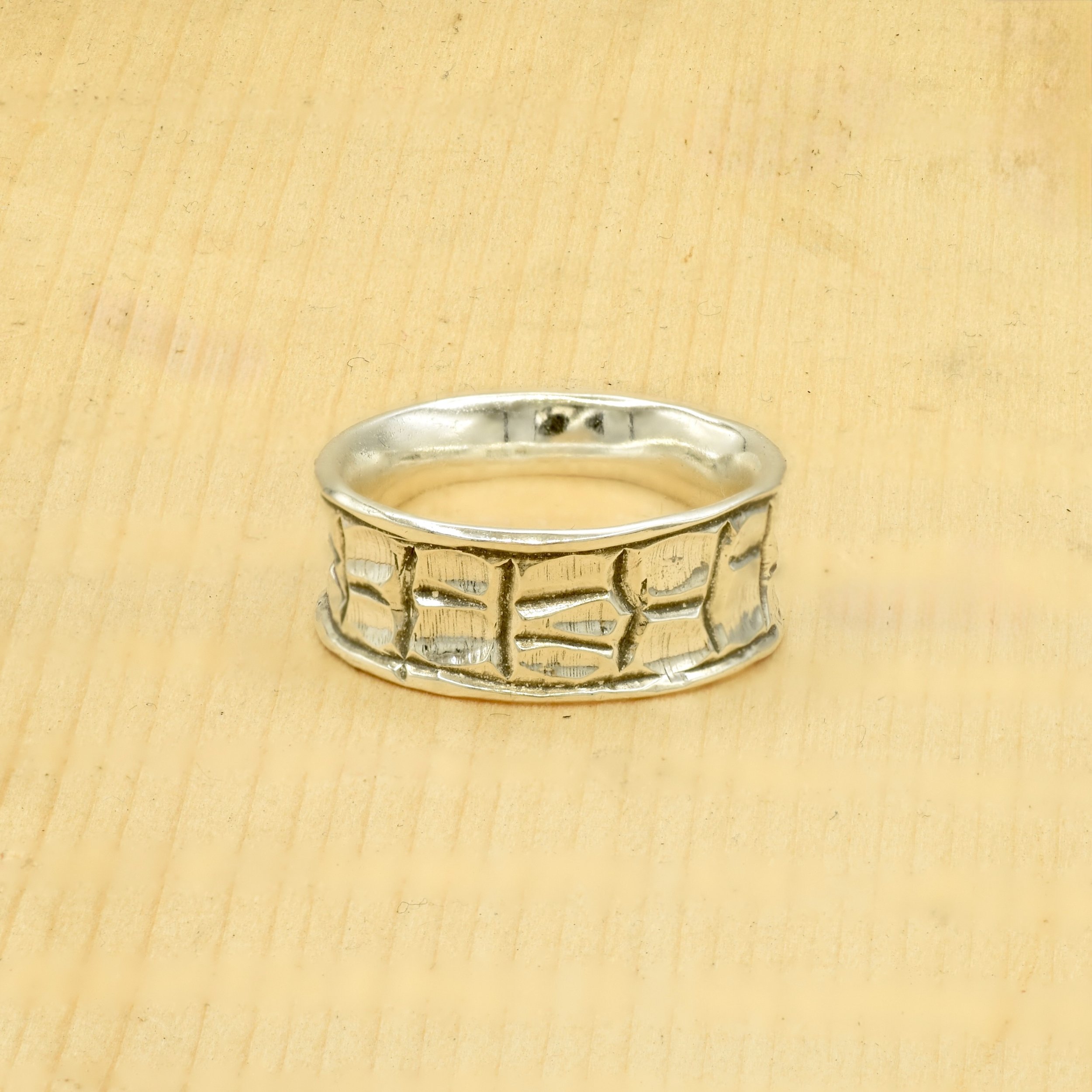 Image 1 of 3
Image 1 of 3

 Image 2 of 3
Image 2 of 3

 Image 3 of 3
Image 3 of 3




Loblolly Pine Bark Ring | (Pinus taeda) | Size 9 ¾
Carved to mimic the chunky rectangle bark of the loblolly tree, a prolific east cone pine, this ring is cast in sterling silver and antiqued.
Sterling Silver
Size 9 ¾ 9mm tall
Wax carving
Instagram or Facebook: @shademetals
Carved to mimic the chunky rectangle bark of the loblolly tree, a prolific east cone pine, this ring is cast in sterling silver and antiqued.
Sterling Silver
Size 9 ¾ 9mm tall
Wax carving
Instagram or Facebook: @shademetals
Carved to mimic the chunky rectangle bark of the loblolly tree, a prolific east cone pine, this ring is cast in sterling silver and antiqued.
Sterling Silver
Size 9 ¾ 9mm tall
Wax carving
Instagram or Facebook: @shademetals


Bark Patterns
Tree bark patterns are fascinating because they reflect both the tree's biology and its interaction with the environment. Bark serves as a protective covering, helping to shield the tree from pests, diseases, and environmental conditions. The texture and appearance of bark result from the growth and development of the tree's cambium, a layer of tissue beneath the bark responsible for producing new layers of wood and bark annually.
Loblolly pine bark is thick and deeply furrowed, with irregular, elongated plates. The bark tends to become more rugged and deeply fissured as the tree ages.
Why It Forms:
Pines like Pinus taeda produce thick bark as an adaptation to fire-prone environments. The thick plates help insulate the cambium and vital tissues from heat during wildfires.
The deep fissures and rugged plates form due to the tree's rapid growth and the production of large amounts of cork cambium, which adds layers of protective bark.
The pattern can vary depending on environmental stressors, with more rugged bark forming in trees exposed to frequent fires or extreme conditions.
Ecological Significance:
The thick, plated bark provides habitat for insects and small animals.
It plays a key role in the tree's survival in ecosystems where fire is a natural occurrence.
Specific bark patterns optimize the tree’s survival in its particular ecosystem, they are shaped by evolutionary pressures like climate, predation, and competition.

